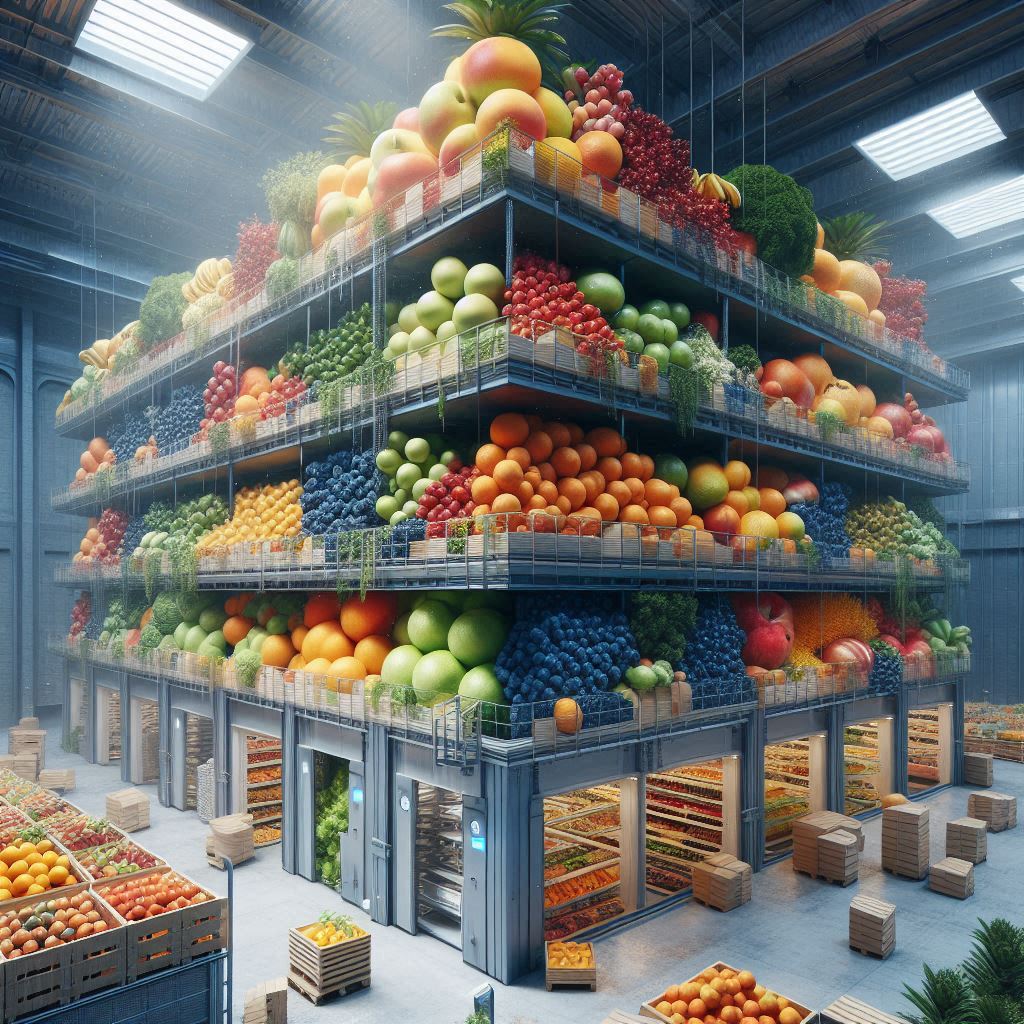Fundamentals of Fruit Storage in Cold Storage Facilities
نوشته شده توسط کیویران | 1402/09/12
Cold Storage of Fruits: A Key to Freshness and Longevity
Cold storage is an essential and efficient method for extending the shelf life and preserving the quality of fruits. By controlling temperature, humidity, and gas composition, cold storage creates optimal conditions for long-term fruit preservation. This article explores the principles of fruit storage, types of cold storage facilities, advantages, and challenges of this method.
Principles of Fruit Storage in Cold Rooms
1. Temperature Control
Temperature is one of the most critical factors in cold storage. Lower temperatures slow down microbial and enzymatic activities, preventing fruit spoilage. Each fruit has an ideal storage temperature to maintain its freshness and quality.
✅ Apple: 0 to 4°C (32 to 39°F)
✅ Banana: 13 to 15°C (55 to 59°F)
2. Humidity Management
Relative humidity plays a crucial role in preventing fruit dehydration and shrinkage. The ideal humidity level for most fruits is 85-95%. Excessively low or high humidity can reduce quality and shelf life.
3. Ventilation & Gas Composition
Proper ventilation and gas control help maintain fruit freshness. Reducing oxygen levels and increasing carbon dioxide can slow respiration and delay ripening. Advanced storage technologies like Controlled Atmosphere (CA) and Modified Atmosphere (MA) systems regulate gas composition for optimal fruit preservation.
Types of Cold Storage Facilities
1. Above-Freezing Cold Storage
✅ Temperature Range: 0 to 15°C (32 to 59°F)
✅ Best for: Fruits that do not require freezing
✅ Short-Term Storage: Up to a few weeks
✅ Long-Term Storage: Up to several months
2. Below-Freezing Cold Storage
✅ Temperature: Below 0°C (32°F)
✅ Best for: Frozen fruits
✅ Purpose: Long-term storage and microbial growth prevention
Advantages of Cold Storage for Fruits
✔ Extended Shelf Life: Cold storage significantly increases fruit longevity, reduces spoilage, and allows fruit availability beyond harvest seasons.
✔ Preservation of Nutritional Value: Low temperature and humidity control slow down chemical reactions, preserving vitamins and nutrients.
✔ Reduction of Food Waste: Proper cold storage minimizes fruit waste, ensuring more products reach consumers while preventing resource loss.
Challenges of Fruit Storage in Cold Rooms
⚡ High Energy Costs: Maintaining optimal temperature and humidity levels requires substantial energy consumption, posing financial challenges for small-scale producers.
🛠 Need for Advanced Equipment: Efficient storage demands modern technology for temperature, humidity, and gas control, requiring significant investment and regular maintenance.
🦠 Risk of Contamination: Improper hygiene and sanitation can lead to microbial growth and fruit contamination. Regular cleaning and disinfection are essential for maintaining food safety.
Conclusion
Cold storage is one of the most effective methods for prolonging fruit shelf life and maintaining quality. By following proper storage principles, using suitable cold storage facilities, and implementing effective management strategies, businesses can maximize the benefits of this method. Investing in advanced storage technologies and promoting efficient cold storage practices will contribute to sustainable agricultural development and reduced food waste.

